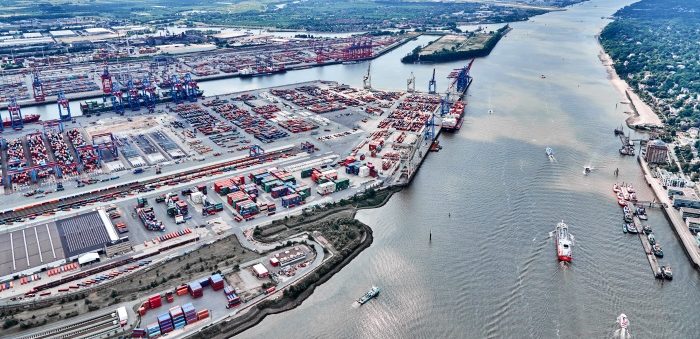Port of Hamburg announced its financial results for Q1 of 2019, noting that it is experiencing an increase, with seaborne cargo throughput increased by 6%, general cargo throughput risen by 5.4% and bulk cargo up by 7.5%. Also, 12 liner services now link the port with 29 ports in the US, Mexico and Canada.
Specifically, the Port highlights that the 6.4% increase in container handling is mostly attributable to four liner services new to Hamburg and linking the Hanseatic City with ports in the USA, Canada and Mexico. A total 121,000 TEU for container transport with the USA represented an almost fourfold jump, catapulting the USA into second place among Hamburg’s top trading partners on container traffic.
Now, the general cargo segment concerning German trade with the US is the second strongest, following China, as it is measured at around 14.1 million tonnes.
Axel Mattern, Joint CEO of Port of Hamburg Marketing added
Including bulk as well as general cargoes, in seaborne cargo handling the Port of Hamburg has so far annually loaded and discharged a total of around 5.5 million tons.
Moreover, feeder traffic and landside seaport were at 1.45 million TEU up by 8.0% in comparison to the previous year – also profited from the new container lines. Of the total of 2.3 million TEU handled, 865,000 TEU – up 3.8%– were transported by feedership to other European ports.
The Port of Hamburg has also many advantages due to the efficiency of the automated HHLA Container Terminal Altenwerder (CTA), its hinterland infrastructure handling about 2,100 container block train connections, as well as the dense network of feeder links.
[smlsubform prepend=”GET THE SAFETY4SEA IN YOUR INBOX!” showname=false emailtxt=”” emailholder=”Enter your email address” showsubmit=true submittxt=”Submit” jsthanks=false thankyou=”Thank you for subscribing to our mailing list”]
Additionally, after the Elbe River deepening project is conducted and finished, large containerships and bulk carriers will be able to transport around 18,000 tons more cargo when arriving or sailing in Hamburg.
The port aims to expand its knowledge and expertise in the logistics sector, exploiting technological progress.
Concluding, the Port of Hamburg provides more than 156,000 secure jobs in the Hamburg Metropolitan Region, and is also an important industrial location and in generating added value of 21.8 billion euros, of immense importance for the entire German national economy.































































